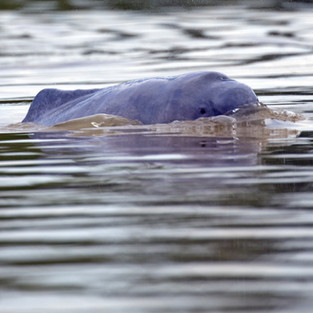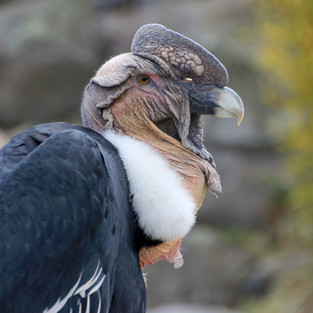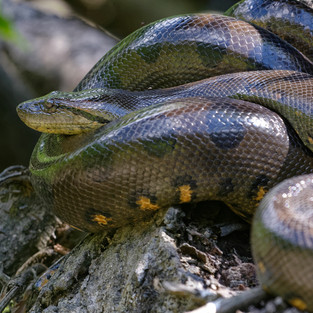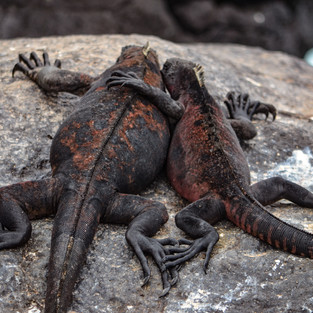Ecuador: A Megadiverse Country
- admin729427
- Sep 29, 2020
- 4 min read
Updated: Jan 2, 2022
According to Conservation International, there are only 17 megadiverse countries in the world, and Ecuador is number 6 on that list, despite being a small country. This great biodiversity is due in part to the fact that we have four very distinct regions: the Galapagos Islands, the Coast, the Highlands, and the incredible Amazon Rainforest, which is where our conservation and ecological restoration projects are located. These are in the provinces of Napo and Pastaza, near protected areas; in the case of Mushullakta (in Napo), it’s next to the Sumaco-Napo-Galeras National Park.
What is mega-diversity?
This concept was developed by Conservation International in 1988. It refers to countries with high levels of biodiversity. The term highlights that most of these countries are in the tropics, and, unfortunately, they also tend to be economically disadvantaged. They have the huge responsibility of conserving biodiversity, but often they don’t have the financial resources to do so. That’s why the help of countries that do have the necessary economic possibilities, but that are perhaps not megadiverse, is critical. In short, the mega-diversity concept helps to create equality in the responsibility for global conservation.

It’s also important to note that one of the requirements for a country to be considered mega-diverse is that the biodiversity it has must be mainly of endemic species. An endemic species is one that only lives naturally in a specific place; that is, it’s a species unique and particular to a certain region.
Why is it important to protect the
biodiversity of megadiverse countries?
One of the main reasons is that human life depends on the ecosystems in which we live. If we overexploit these, we put great pressure on them to provide us with basic services, such as fresh water, pollination, fertility and soil stability, food and medicine, among other natural resources; in other words, human life becomes much more difficult to sustain.
Another reason is the relationship between the destruction of the environment and the spread of new diseases. We’ve all been able to experience this situation firsthand with the current COVID-19 pandemic, which is believed to have occurred due to the destruction of the natural habitats of some wild animals —the intermediate horseshoe bat (Rhinolophus affinis), in this case—. By destroying their habitats, the animals are forced to leave their natural environments and seek refuge elsewhere. In this way, they get closer and closer to human settlements: that’s when diseases that previously only affected wild animals might ‘make the jump’ to humans.
The huge amount of endemic species is another key reason why the conservation and protection of mega-diversity is crucial. Many times, these species are endemic not to a large geographical area, but to a very small one. Therefore, cutting down a hectare of forest in the Amazon rainforest, for example, could mean running the risk of extinguishing a species that was endemic to that hectare, because that species only occurred in that specific place…
What are some of the endemic species that make
Ecuador a megadiverse country?
As we mentioned above, one of the main reasons that Ecuador has such a high biodiversity, is because, despite being so small, we have four distinct regions. The geographic, geological and weather-related differences among these regions, means that you can find a wide variety of incredible animals, all in this one small country:
Amphibians like the Napo tropical bullfrog and the tiger-striped leaf frog in the Amazon region
Insects like the daddy long legs, or giant grasshoppers, also in the tropical rainforest of the Amazon region and the Coast
Mammals like pink dolphins swimming in the rivers of the rainforest; or the oncilla wild cat and spectacled Andean bear, both of whom have huge territorial ranges, from the rainforest to the mountains
Birds like the majestic Andean condor soaring above the high mountain peaks; the famous blue footed boobies of the Galapagos Islands; and the sapphire-vented puff leg hummingbird flying among the trees in the Andean forests
Reptiles like the green anaconda in the tropical humid rainforests, and the marine iguana of the Galapagos Islands
And fish like a school of black skipjack, and a black spotted eagle ray, swimming in the ocean around the Galapagos Island
These photos show just a small sample of the endemic animals that make Ecuador a mega-diverse country.
Of course, megadiversity isn’t limited to animal species, but includes endemic plant and tree species. In this sense, Ecuador also has a wide variety of plants. The photos below are also only a tiny sample of the endemic plant species:
What can we do to preserve this mega-diversity?
Finally, Ecuador and, in general, all the mega-diverse countries with scarce economic resources can’t preserve their mega-diversity without the support of countries that do have the economic resources for doing so. The good thing is it isn’t even necessary to contribute with large amounts! If you want, you can check out our eco-services section on our website, where you can see all the eco-services we offer for the conservation and protection of this biodiversity: it's in the best interest of everyone for this mega-diversity to continue to exist.
Finally, there is such a great variety of endemic species of plants and animals in Ecuador, that several books could be written about these wonders! We can’t offer you this book collection... but we can offer you a series of blog articles about the amazing species that make Ecuador a mega-diverse country! Follow us on our social networks so you don’t miss our next blog in this series, which will be focused on the endemic animal species of the Amazon rainforest, where we are carrying out our projects.
Sources:
Mittermeier, R.A., Robles-Gil, P., Mittermeier, C.G. (1997). Megadiversity. Earth's Biologically Wealthiest Nations. CEMEX / Agrupación Sierra Madre, Mexico City. Recovered from: https://www.biodiversitya-z.org/content/megadiverse-countries.pdf
Ron, S. R., Merino-Viteri, A. Ortiz, D. A. (2019) Anfibios del Ecuador. Version 2019.0. Museum of Zoology, Pontifical Catholic University of Ecuador. Recovered from: https://bioweb.bio/faunaweb/amphibiaweb





































































